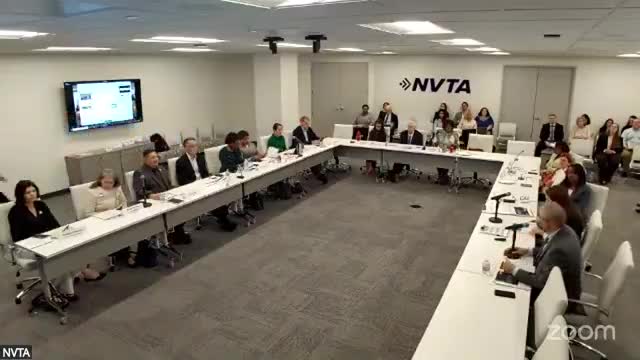NVTA consultant outlines $30 billion estimate and 14 funding strategies for regional bike‑ped network
October 10, 2025 | Northern Virginia Transportation Authority, Boards and Commissions, Executive, Virginia
This article was created by AI summarizing key points discussed. AI makes mistakes, so for full details and context, please refer to the video of the full meeting. Please report any errors so we can fix them. Report an error »

Kimley‑Horn consultant Kate Widnes and NVTA staff briefed the authority Oct. 9 on a draft regional bicycle and pedestrian funding study that catalogs planned infrastructure identified in a December 2024 study and evaluates potential revenue strategies.
Widnes said the 2024 inventory covers roughly 4,000 miles of planned bike and pedestrian facilities—shared‑use paths, bike lanes and sidewalks—and that a high estimate inflated to 2034 for those projects is about $30 billion. The draft study, prepared for NVTA, does not identify new projects or prioritize individual projects; rather, it inventories needs and assesses funding pathways.
The study’s process and findings:
- The team compiled and assessed 45 revenue strategies (general revenue, property and sales taxes, transportation‑specific levies and alternative fees) and evaluated them using seven qualitative metrics including feasibility, administrative complexity and equity.
- Through stakeholder outreach (more than 60 invited participants across jurisdictions, state agencies and advocacy groups) and two regional coordination meetings, the team narrowed the list to 14 “high‑quality” strategies for additional study, including further legal and financial modeling work.
- The study did not perform detailed financial scenario modeling or feasibility studies within this phase; that work is listed as a next step.
- The draft report was distributed to the stakeholder group and will be shared with NVTA’s technical and planning committees for endorsement; staff anticipate seeking NVTA approval of the final report at the November meeting.
Widnes emphasized that the study’s scope excludes creating new project lists or doing per‑project feasibility work: those would be follow‑on steps if an implementable revenue strategy is selected. Several authority members said NVTA has previously funded bike‑and‑ped projects and that NVTA could be a potential funding source for future projects if a revenue solution is developed.
The consultant recommended that NVTA pursue additional legal analysis and financial modeling on the 14 candidate strategies before making policy or funding recommendations.
Widnes said the 2024 inventory covers roughly 4,000 miles of planned bike and pedestrian facilities—shared‑use paths, bike lanes and sidewalks—and that a high estimate inflated to 2034 for those projects is about $30 billion. The draft study, prepared for NVTA, does not identify new projects or prioritize individual projects; rather, it inventories needs and assesses funding pathways.
The study’s process and findings:
- The team compiled and assessed 45 revenue strategies (general revenue, property and sales taxes, transportation‑specific levies and alternative fees) and evaluated them using seven qualitative metrics including feasibility, administrative complexity and equity.
- Through stakeholder outreach (more than 60 invited participants across jurisdictions, state agencies and advocacy groups) and two regional coordination meetings, the team narrowed the list to 14 “high‑quality” strategies for additional study, including further legal and financial modeling work.
- The study did not perform detailed financial scenario modeling or feasibility studies within this phase; that work is listed as a next step.
- The draft report was distributed to the stakeholder group and will be shared with NVTA’s technical and planning committees for endorsement; staff anticipate seeking NVTA approval of the final report at the November meeting.
Widnes emphasized that the study’s scope excludes creating new project lists or doing per‑project feasibility work: those would be follow‑on steps if an implementable revenue strategy is selected. Several authority members said NVTA has previously funded bike‑and‑ped projects and that NVTA could be a potential funding source for future projects if a revenue solution is developed.
The consultant recommended that NVTA pursue additional legal analysis and financial modeling on the 14 candidate strategies before making policy or funding recommendations.
View full meeting
This article is based on a recent meeting—watch the full video and explore the complete transcript for deeper insights into the discussion.
View full meeting
